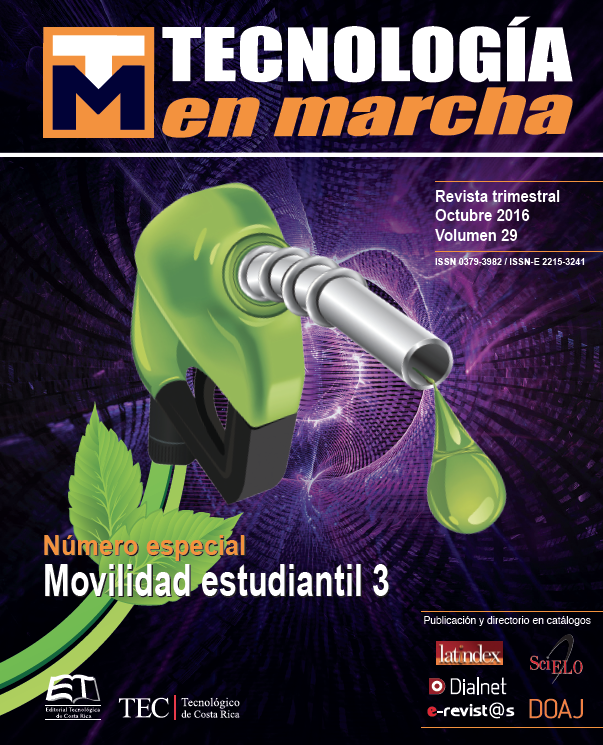Potential natural low-cost adsorbents for the removal of arsenic in drinking water in Costa Rica
Main Article Content
Abstract
Arsenic in water can lead to serious health problems for consumers. In Costa Rica, concentrations higher than the allowable limit (10 ug/L) have been identified in water for human consumption. The adsorption of arsenic on an adsorbent material has been used successfully in other countries for arsenic removal. To do this, a large variety of synthetic or natural products of industrial or agricultural processes are available as adsorbent materials. The synthetic adsorbents usually have high adsorption capacities but represent higher purchasing costs, contrary to natural materials and processes waste, which are cheaper and easier to find; nevertheless, they have a lower adsorption capacity. Within this context, an analysis of local options for natural materials at low cost is presented. They are materials with a relatively high content of iron oxides, aluminum and titanium, that could be used to remove arsenic from water. The identified materials are biotite, limestone, diatomite, magnetite enriched sands and pyroclastic rocks of basaltic composition. All these materials originate in the area of Guanacaste, affected by presence of arsenic in water.
Article Details
Los autores conservan los derechos de autor y ceden a la revista el derecho de la primera publicación y pueda editarlo, reproducirlo, distribuirlo, exhibirlo y comunicarlo en el país y en el extranjero mediante medios impresos y electrónicos. Asimismo, asumen el compromiso sobre cualquier litigio o reclamación relacionada con derechos de propiedad intelectual, exonerando de responsabilidad a la Editorial Tecnológica de Costa Rica. Además, se establece que los autores pueden realizar otros acuerdos contractuales independientes y adicionales para la distribución no exclusiva de la versión del artículo publicado en esta revista (p. ej., incluirlo en un repositorio institucional o publicarlo en un libro) siempre que indiquen claramente que el trabajo se publicó por primera vez en esta revista.

